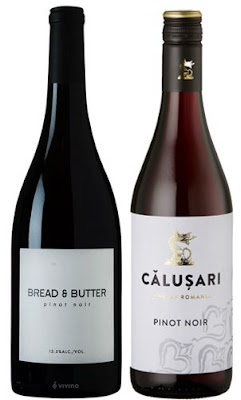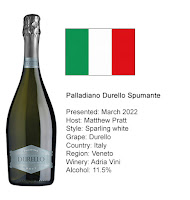The host of our September evening was Martin Marais, one of our club members.
Martin generally prefers full-bodied reds, such as Merlot, Syrah and Malbec. However, at the beginning of the year he decided to broaden his wine horizons and explore Pinot Noir wines. So, for seven months he only bought Pinot Noir wines and ordered it in restaurants. He also read everything he could about the grape and wine, and visited Burgundy (the “birth place” of Pinot Noir) where he visited domains in Rully and Beaune to do some tasting.
The night was an opportunity for Martin to tell us what he had learnt.
The first thing Martin explained was the character of Pinot Noir wine. It is:
- Medium bodied and medium dry
- It has an alcohol content in the range 11 to 13.5%
- It has medium tannins and good acidity, although some vineyards add white wines to increase acidity, which can also increase the laying down period of the wine. Pinot Noir wines age well and can be laid down for up to 10 years.
The “ideal” drinking temperature is at the lower end for red wines at about 14oC, with Malbec at 16oC, and Cabernet Sauvignon, Merlot, Carménère and Syrah at 18 oC.
Cheese Pairings include Semi-hard cheeses such as Gruyère and Comté or more pungent washed-rind cheeses such as Epoisses and Reblochon.
Martin presented two Pinot Noirs to allow members to experience the differences between old-world and new-world styles; one from France and one from New Zealand.
Pinot Noir has been given the nickname “The Heartbreak Grape”. This is because;
- It is a difficult and finicky grape to grow
- It is thin-skinned, which makes it liable to damage
- Its berries are tightly clustered making it prone to disease
- It is very fussy about the climate in which it grows, demanding a cooler-climate, limestone-rich clay soils, that drain easily and deep soils through which the roots can grow for water
- It generally delivers lower yields than other red grape varieties
Therefore, good quality Pinot Noir wines often have a higher price tag, indeed it produces some of the most highly priced varietal wines in the world; half of the world’s 50 most expensive wines are made with Pinot Noir.
Regardless of all its foibles, Pinot Noir is still a popular grape to grow and is in the top ten (9th) grapes grown by area in the world. The primary producer of Pinot Noir wine is France, followed by the USA, Germany, Moldova, Italy, New Zealand, Australia and Austria. Some of the Pinot Noir wine areas of greatest reputation are listed below.
Pinot Noir literally means ‘black pine cone’, which is a comment on its shape and colour. It is French in origin, from Burgundy and is one of the oldest grape varieties. It was widely grown by Cistercian monks in Burgundy who used it as a Communion wine. When the monks dispersed to establish new monasteries, they took vines with them and thus helped spread the variety across Europe.
The grape has around 300 synonyms, the German grape Spätburgunder is in fact Pinot Noir. It has also spawned the most clones (nearly 50) amongst the more well-known commercial grape varieties. A clone is a genetic mutation of the parent vine. Clones that have developed from Pinot Noir include Pinot Gris, Pinot Blanc, Pinot Meunier and Frühburgunder. The latter is an early fruiting variety which, as a result, is increasingly grown in England and Wales where it is known as Pinot Noir Précoce.
The grape tends not to be used to create red blends, but is famously used in sparkling wine blends, most notably Champagne.
However, it has been cross- fertilised with other grapes, resulting in famous grape varieties such as Chardonnay (Pinot Noir x Gouais Blanc) and Pinotage (Pinot Noir x Hermitage - more commonly known as Cinsault).
August 18th is International Pinot Noir Day.
Pinot Noir is a versatile wine for pairing with food not only as a still red, but also because it is made in most styles of wine:
- still white
- sparkling white
- still Rosé
- sparkling Rosé (a speciality of English vineyards)
- still red
- sparkling red (another speciality of English vineyards)
- dessert wines
Although a red grape, its thin skin makes it capable of producing very clear white wines. The fact it has been around for a very long time also means wine makers have had ample time to experiment with it.
There more wines were presented as examples of the wide range of styles that Pinot Noir can be used to make.
An English white. It was accompanied by Black Bomber (an English Cheddar)
French Rosé. It was accompanied by Old Amsterdam (an aged Gouda)
An Italian Franciacorta. It was accompanied by Cornish Yarg (a nettle wrapped hard English cheese)
Franciacorta is a small wine-producing area in Lombardy in northern Italy and is famous for its high-quality Méthode Traditionnelle sparkling wines, which are widely regarded (especially in Italy) as the country’s finest sparkling wines. It is made with Chardonnay and Pinot Noir and limited amounts of Pinot Blanc, whilst Champagne uses Chardonnay, Pinot Noir and Pinot Meunier. Franciacorta production is only 1/10 of that of Champagne and only a small proportion is exported due to its popularity in Italy.
In addition, a dessert wine from Oregon was presented but not tasted (it was too expensive).
Martin’s conclusions of his exploration of Pinot Noir were;
- Exploring Pinot Noir wines is an adventure
- Each bottle is a different drinking experience
- One needs to explore them to find those that one likes
- Price does matter – one needs to spend a bit more to get the quality
- New world styles are fuller bodied
- Hungarian and Romanian are fuller bodied than Western European styles
Of the thirty or so Pinot Noirs Martin tasted, he recommended two:
- a Californian (Bread and Butter)
- a Romanian (Călușari)
Martin's overall conclusion was that he would be sticking with fuller-bodied red wines … although he would continue drinking the Pinot Noir/Hermitage cross called Pinotage, a South African speciality. It was accompanied by Morbier, a French semi-soft cows' milk cheese, and it was an excellent finish to the evening!










































